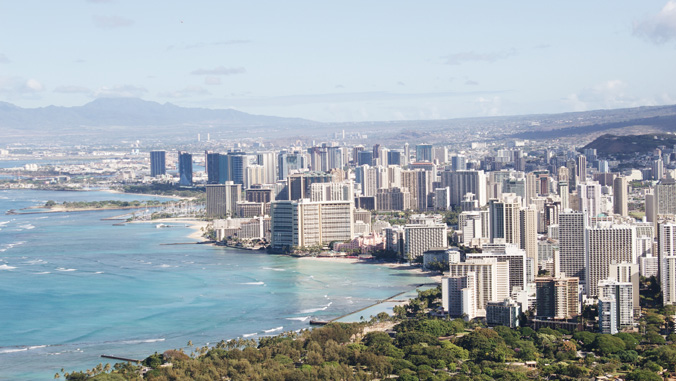
Establishing a “visitor green fee” to protect our environment is one way the Hawaiʻi government could help care for the islands’ precious resources, according to a new blog by the University of Hawaiʻi Economic Research Organization (UHERO).
James Mak, the blog’s author, UHERO research fellow and emeritus professor of economics, said the idea of a visitor green fee—a fee to raise money from tourists to fund conservation and environmental management programs—has been simmering in Hawaiʻi for some time as the state looks for ways to deal with its unfunded environmental liability. Citing a 2019 report (PDF) by Conservation International, Mak noted that the report suggests two ways to erase this funding gap: 1) levy new fees on visitors; or 2) levy a surcharge on the existing transient accommodations (TAT) and the car rental taxes or reallocate some of the money already collected for environmental purposes.
According to the blog post, the state spends less than 1% of its annual operating budget on natural resource management. Conservation International estimates current annual funding is about $360 million short of what is needed.
Other visitor green fees worldwide
Fourteen destinations worldwide issue a visitor green fee, according to Conservation International. It said the Pacific island nation of Palau has “one of the most effective green fee programs in the world, a $100 USD visitor fee embedded into airline tickets.” Likewise, Ecuador’s Galapagos Islands also imposes a $100 USD entrance fee at the port of arrival with the revenues directly used to fund “conservation, protection and management.” Conservation International noted that visitor data shows that implementing the fee did not impact visitor arrival rates.
Supporting HTA’s plan
The visitor green fee may be a solution for the Hawaiʻi Tourism Authority (HTA) as its new Destination Management Action Plan (PDF) for Oʻahu calls for the establishment of a “regenerative tourism fee” that “directly supports programs to regenerate Hawaiʻi’s resources, protect natural resources and address unfunded conservation liabilities.”
Environmental user charges
Not included in the Conservation International report is an environmental user charge for the use of publicly owned or publicly provided facilities or services. An example is the entry fee at the Hanauma Bay Nature Preserve. Environmental user charges are effective and efficient because 1) they capture the cost of environmental services and damages in the prices of the goods and services to more closely reflect their true costs to society; 2) at higher prices they provide incentives to consumers and producers to become more environmentally responsible; and 3) they raise revenue.
Next steps
Mak noted that Hawaiʻi needs to spend more money on environmental stewardship and to encourage residents and visitors to care for the islands’ resources, which should begin with the crafting of a coherent user fee policy on everyone’s access to Hawaiʻi’s natural resources.
UHERO is housed in UH Mānoa’s College of Social Sciences. Read the entire blog post on UHERO’s website.
This work is an example of UH Mānoa’s goal of Building a Sustainable and Resilient Campus Environment: Within the Global Sustainability and Climate Resilience Movement (PDF) and Excellence in Research: Advancing the Research and Creative Work Enterprise (PDF), two of four goals identified in the 2015–25 Strategic Plan (PDF), updated in December 2020.

